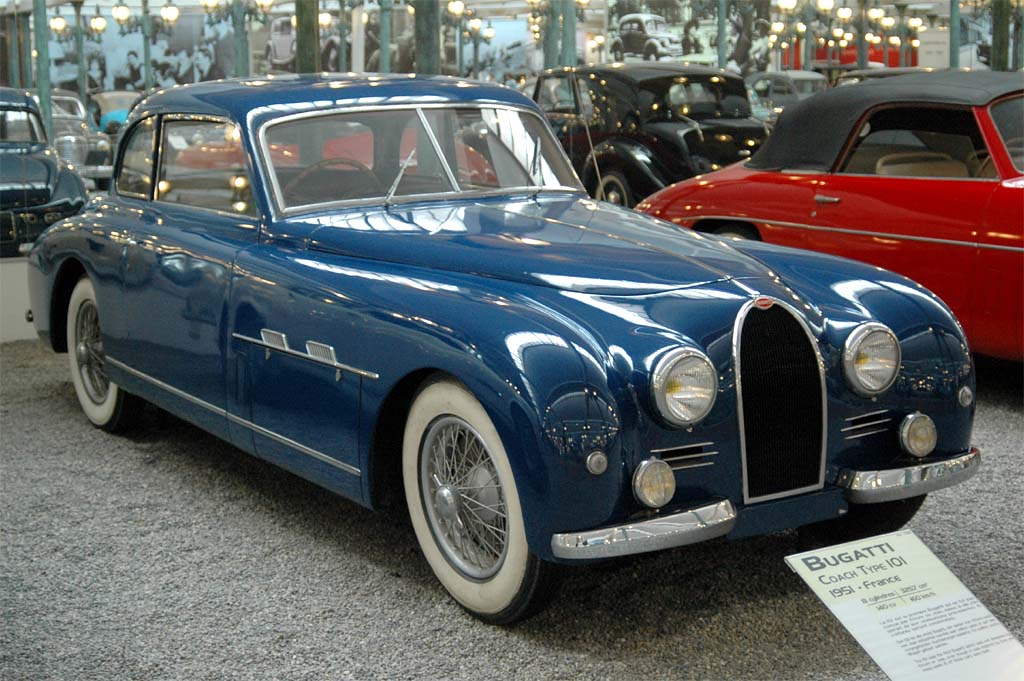The Bugatti Type 101 was a luxury car manufactured by French automaker Bugatti from 1951 to 1956. It was the last model produced by the company before it went bankrupt in 1963. The Type 101 was an evolution of the Type 57, which was Bugatti’s flagship model for over a decade. The Type 101 was designed to be a more refined and luxurious version of the Type 57, with a more comfortable interior and improved ride quality. In this article, we will take a closer look at the history and specifications of the Bugatti Type 101.
History of the Bugatti Type 101
The Bugatti Type 101 was first introduced in 1951, at the Paris Auto Show. It was designed to replace the Type 57, which had been in production since 1934. The Type 101 was built on the same chassis as the Type 57, but with several improvements to the suspension and brakes. The Type 101 was powered by a 3.3-liter straight-eight engine, which was capable of producing up to 135 horsepower.
The Type 101 was available in two body styles: a two-door coupe and a four-door sedan. The coupe was designed by Antem, a French coachbuilder, while the sedan was designed by Gangloff, another French coachbuilder. Both body styles were built on the same chassis, but the sedan was slightly longer and heavier than the coupe.
Despite its improvements over the Type 57, the Type 101 was not a commercial success for Bugatti. The company was struggling financially, and only 7 coupes and 6 sedans were ever produced. The last Type 101 was built in 1956, and Bugatti went bankrupt in 1963.
Specifications of the Bugatti Type 101

| Model | Bugatti Type 101 |
|---|---|
| Engine | 3.3-liter straight-eight |
| Horsepower | 135 hp |
| Top Speed | 120 mph |
| Transmission | 4-speed manual |
| Wheelbase | 130 inches |
| Length | 200 inches (coupe), 215 inches (sedan) |
| Weight | 3,700 lbs (coupe), 4,300 lbs (sedan) |
Pros and Cons of the Bugatti Type 101

Pros:
- The Type 101 was a beautiful car, with elegant styling and luxurious features.
- The Type 101 had a powerful engine, capable of producing up to 135 horsepower.
- The Type 101 was built on a strong and reliable chassis, which was an evolution of the Type 57.
Cons:
- The Type 101 was not a commercial success for Bugatti, with only 13 cars ever produced.
- The Type 101 was built during a difficult period for Bugatti, when the company was struggling financially.
- The Type 101 was a heavy and cumbersome car, with poor handling.
FAQs about the Bugatti Type 101
Q: How many Bugatti Type 101s were produced?
A: Only 13 Bugatti Type 101s were ever produced: 7 coupes and 6 sedans.
Q: What was the top speed of the Bugatti Type 101?
A: The Bugatti Type 101 had a top speed of 120 mph.
Q: What was the engine of the Bugatti Type 101?
A: The Bugatti Type 101 was powered by a 3.3-liter straight-eight engine, which was capable of producing up to 135 horsepower.
Q: Who designed the body of the Bugatti Type 101?
A: The coupe was designed by Antem, a French coachbuilder, while the sedan was designed by Gangloff, another French coachbuilder.
Topics Related to the Bugatti Type 101
1. The History of Bugatti

2. The Evolution of the Bugatti Type 57

3. The Legacy of Ettore Bugatti

4. The Impact of World War II on Bugatti
5. The Design Philosophy of Bugatti

6. The Role of Coachbuilders in the History of Bugatti

7. The End of Bugatti

Conclusion
The Bugatti Type 101 was a beautiful and luxurious car, with a powerful engine and elegant styling. However, it was not a commercial success for Bugatti, and only 13 cars were ever produced. Despite this, the Type 101 remains a highly sought-after collector’s item, with its rarity and exclusivity adding to its appeal. The Type 101 was the last model produced by Bugatti before the company went bankrupt in 1963, but the Bugatti brand has been revived several times since then, with its cars continuing to push the boundaries of automotive engineering and design.
Related video of Bugatti Type 101 History and Specifications

